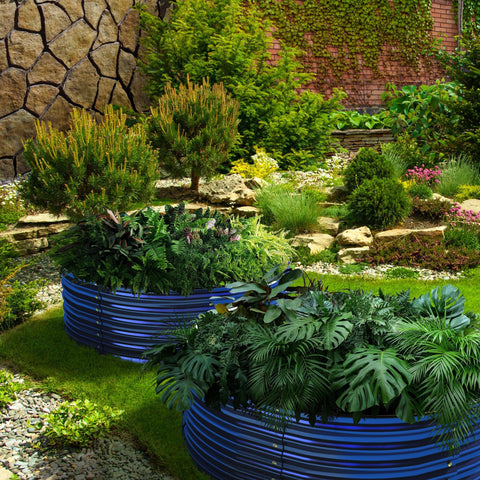Five Considerations for Garden Bed Tree Grafting
When growing plants in a garden bed, why do some plants graft? Grafting is the purposeful use of the ability of two different plants to join together by attaching a branch or bud of one plant to a stem or root of another to heal together and form a new individual. Grafting can keep the good characteristics of varieties, enhance the resistance and adaptability of scion varieties, change plant type and early flowering age, etc. Grafting to improve the survival rate, generally speaking to choose a good season, pay attention to grafting techniques, but specific to the actual grafted plants, and each has its own advantages and disadvantages, this can’t be ignored. In the process of grafting, we should pay attention to the following five points:

I. Affinity of rootstock and scion:
Affinity refers to the healing ability of rootstock and scion grafts. The affinities, physiology, morphological structure and genetic characteristics of plants, as well as the effects of inclusions, determine the size of affinity. For example, grafting fruit peach, if the use of peach rootstock, both belong to its affinity is strong, easy to survive grafting, but if the selection of different branches of locust rootstock, it isn’t affinity, grafting will not survive.
2. Selection of rootstock and scion:
The selection of rootstock should pay attention to the following conditions: (1) Have a good adaptability to the climate, soil and other environmental conditions in the cultivation area, developed roots, strong growth of the middle or young trees; (2) no pests and diseases, good resistance to drought and flood, low temperature, air pollution, etc.; (3) Sufficient sources, easy reproduction, in use to meet special needs, such as dwarf, no thorns, etc. In addition, scions should also be selected to grow vigorously, no pests and diseases, and should be annual or current half-woody branches as the best. Scion is too old , the healing survival is poor or difficult to survive.
3. Scions should be joined with cutting:
Scion can’t be cut after too long, to prevent water loss and dry, affect the survival rate. Such as winter from a distance cut five needle pine scion, should be temporarily put indoors, but pay attention to moisturizing storage. Because the bud of fruit peach is smaller, attention should be paid to the bud with scissors. Grafting should choose no wind shade for good, to prevent sun and rain, resulting in scion dry, affect survival.
4. grafting time:
Grafting time should be selected in scion and rootstock in the germination period or growth period is good, too early too late, the healing condition is not good. The grafting time of peach and pine can also be done in July when the plants grow slowly. Non-rapid growth season grafting, grafting often adopts bud grafting or abdominal grafting, etc., pay attention to rain prevention after grafting, otherwise grafting mouth water will cause infection and necrosis. For high temperature season grafting, grafting after not too much exposure to the sun, there is no need to be too deliberately shade, even after grafting rootstock leaves slightly cover the interface can be. After this healing, there is no need to rush to cut the anvil to let scion germination, generally such as dormant after pruning, the next spring bud can break out.
5. cambium alignment:
The stem is composed of surface layer, cortex, phloem, xylem and pith. The cambium is the key to grafting healing, and the grafting is easy to survive if the cambium between the rootstock and scion is aligned and closely combined. Especially for plants with thick rootstock and thin scion, more attention should be paid to cambium alignment. For example, when the cambium is most active, the graft is most likely to survive, and the germination rate is very fast. Although the cambium is not active, the graft can survive, but the survival rate and germination rate are poor. Therefore, it is best in the spring when the SAP flows and the bud point does not germinate, that is, when the bark can be easily separated with one button. At this time, whether it is T bud grafting, skin grafting, square bud grafting, etc., it has a very high survival rate. After grafting, pay attention to tight bandaging, to tie firmly scion is good, should not be excessive force bandaging, that may crush the tissue of the grafting mouth. For walnut and other plants, after grafting pay attention to the injury flow, you can also graft before the root break, water to reduce the generation of injury flow.

The stem is composed of surface layer, cortex, phloem, xylem and pith. The cambium is the key to grafting healing, and the grafting is easy to survive if the cambium between the rootstock and scion is aligned and closely combined. Especially for plants with thick rootstock and thin scion, more attention should be paid to cambium alignment.
